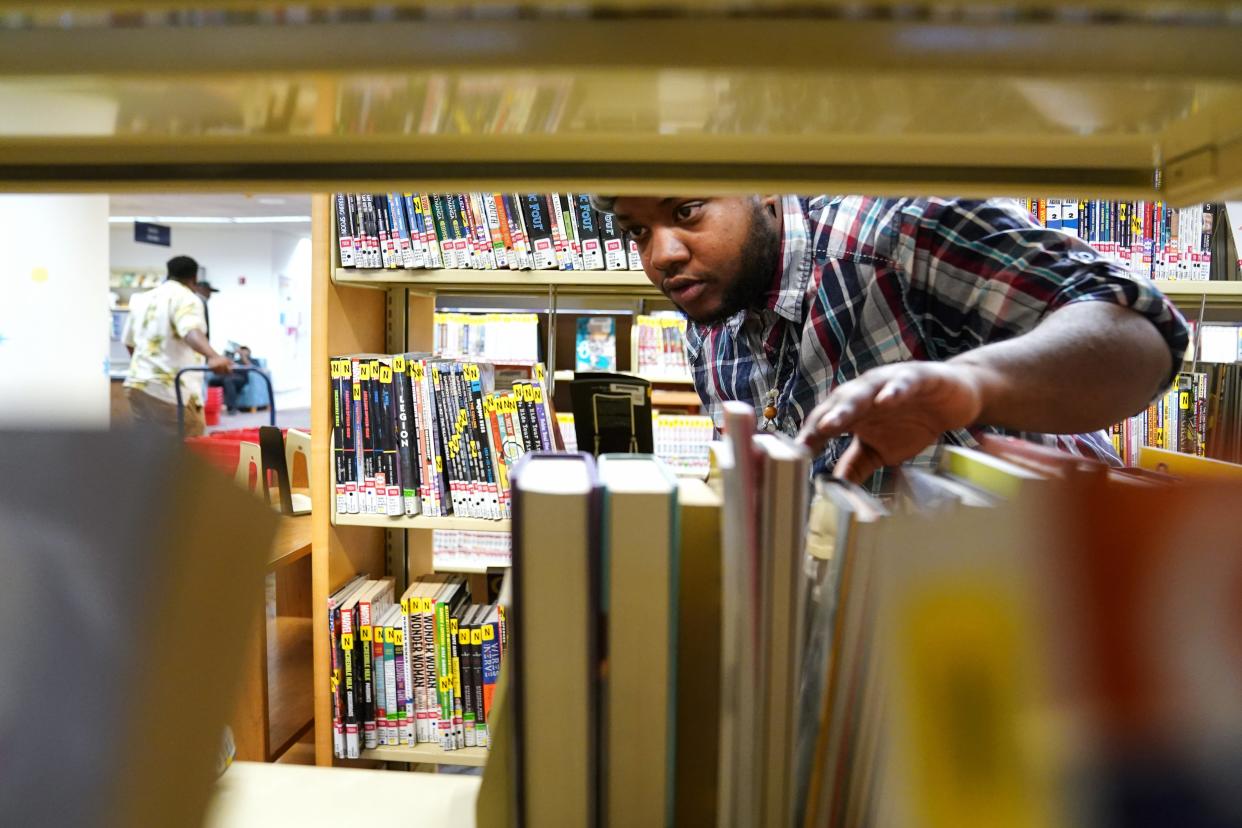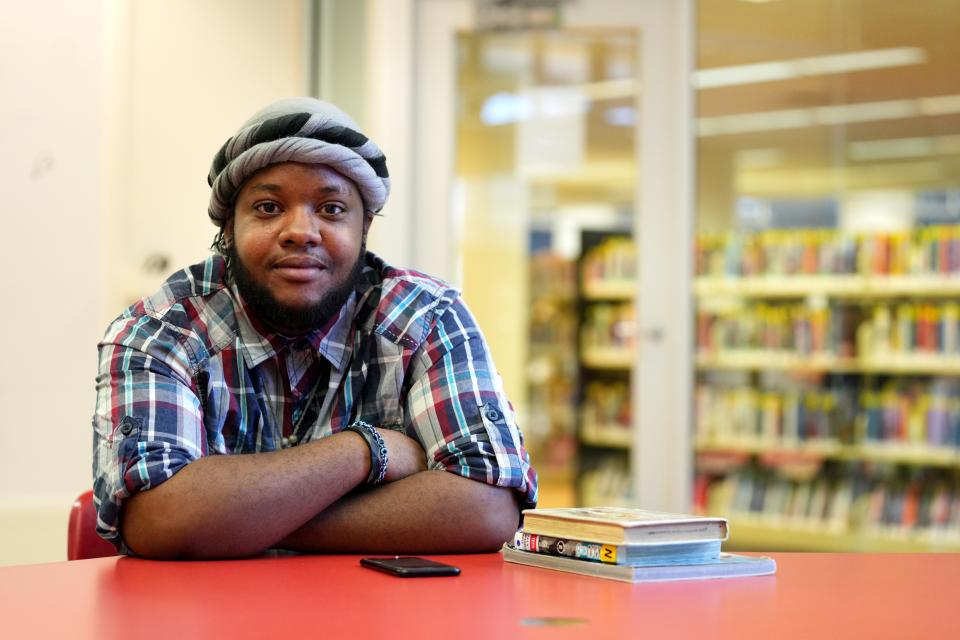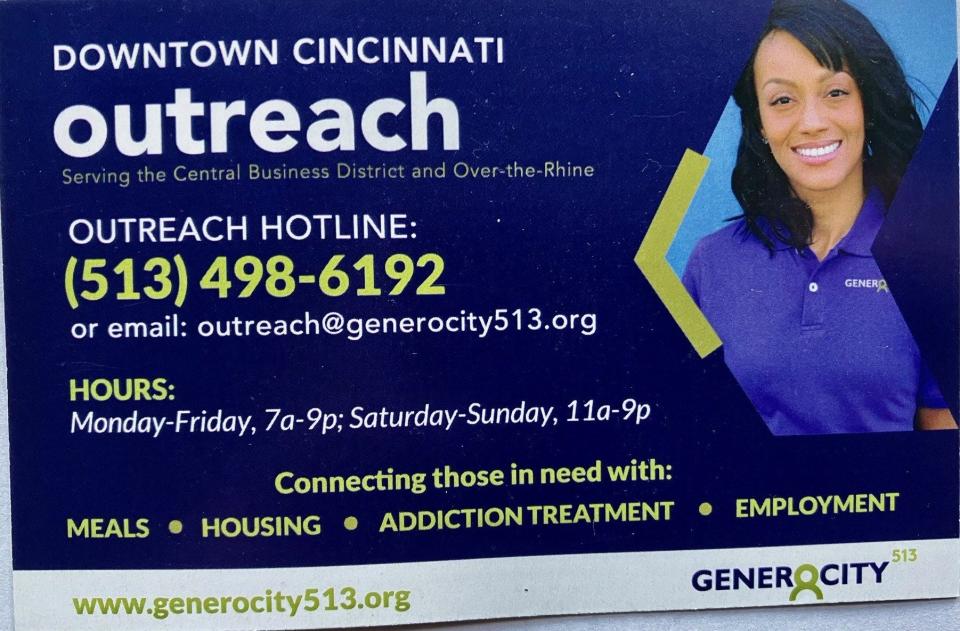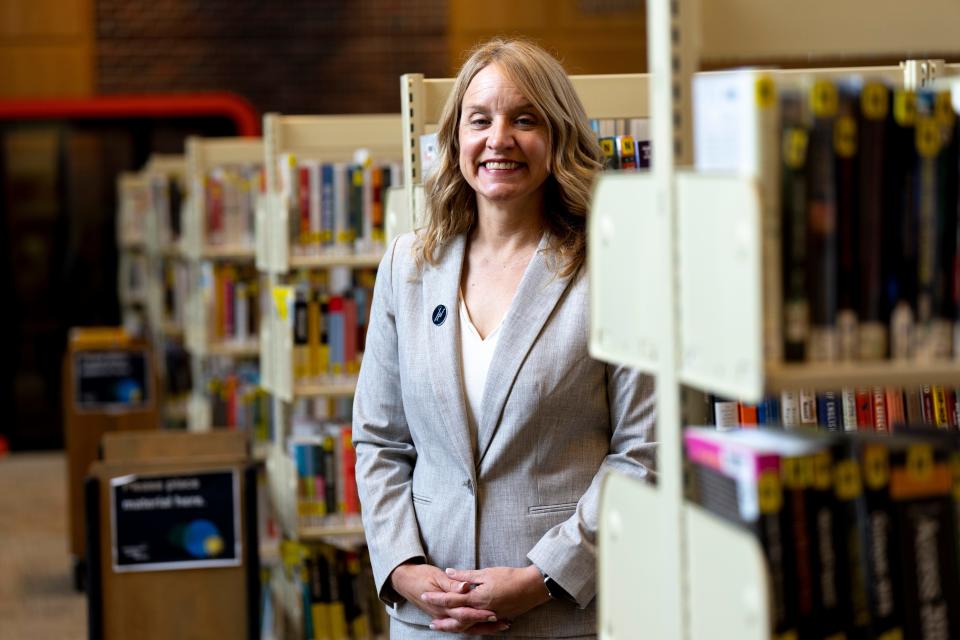Cincinnati libraries 'on front lines' of homelessness

Talid Boycan is a lifetime reader, writer and library user.
He was a regular at the West End library branch when he lived in that neighborhood. He visited the Avondale branch when his grandmother lived nearby. Now a resident of South Fairmount, he frequents the Downtown branch.
Local libraries have been a home away from home for Boycan, even when he occasionally found himself without a home.
“It was a safe space,” Boycan, 26, said during a recent visit to the Cincinnati & Hamilton County Public Library's main location.
That was true when he was a high school student with homework – and when he found himself living in a local shelter in his early 20s.
“I didn’t cause any conflict,” he said. “They probably didn’t even know.”
That’s intentional, library administrators say.
Libraries are open to all comers regardless of their current addresses.
“We don’t presume to know people’s circumstances,” said library director Paula Brehm-Heeger.
At the same time, her staff is aware that people experiencing homelessness are among their most regular visitors – and all in on “meeting people where they are,” said Civic Engagement Coordinator David Siders.
That puts Cincinnati in the company of 71% of U.S. city libraries “currently addressing” the needs of library visitors experiencing homelessness with some service, according to a 2022 survey by the Public Library Association. Another 15% of city libraries said they planned to do the same.
That does not always sit well with other library patrons.
“As a library administrator, I hear the public express annoyance more often than not: ‘What are they doing in here?’ ‘Can’t you control them?’” now-retired Salt Lake City librarian Chip Ward wrote in a 2007 essay that inspired “The Public,” a 2019 film shot in Cincinnati.
“Yes, we know, we say to them,” Ward wrote. “We hear you loud and clear. Be patient, please, we are doing the best we can.”

No one asks for home addresses
Most any morning, people wait near Ninth and Vine streets for the Downtown library to open at 10 a.m.
Some are charging phones. Some are sitting on windowsills. Some arrive with bags or carts filled with possessions. Some eat, smoke and chat.
As they stream inside – whether to check out books, use computers or just find a chair indoors – no one asks who lives where.
The fact that some might be unhoused prompted harsh comment from some Enquirer readers earlier this year.
One called libraries “a daytime homeless shelter.” Another said they are “a meeting point for drug users and criminal element.” Some said the presence of “hobos,” “bums” and “vagrants” were reasons to vote against a fall ballot measure to increase library tax funding.
“These are not safe places to go or to take your kids,” said another in online comments to Enquirer coverage.

'We are on the front lines'
In Cincinnati, as in places like Salt Lake City, “huge societal issues” arrive daily at library doors, said Brehm-Heeger.
“We are on the front lines,” she said. “We always have been.”
Over the past two decades or so, Cincinnati libraries have leaned in to those issues – sometimes providing direct service, more often providing connections to other governmental agencies.
For kids, staff help with homework, keep order and sometimes offer snacks and meals. For adults, there is help to find jobs, pay taxes or get social services. During the pandemic, library visitors could get a COVID vaccine or help avoiding eviction. Soon, some librarians will be trained to use AEDs – automated external defibrillators – should a visitor suffer a heart attack.
And yes, libraries help people experiencing homelessness – if they want help.
Library Public Safety Manager Ebony Gordon and her team members hand out what they call “palm cards.” The business-sized cards list the phone number and web address of GeneroCity513, which provides meals, housing, addiction services and other assistance to unhoused people.
“We let them take that card and decide later if they need services,” Gordon said.
Bulletin boards and flyers also offer help – with postings for health care services, a produce pantry, an outreach team, how to avoid fentanyl overdose and how to use 911.
Sometimes a cell phone is the most immediate need of a person experiencing homelessness. The library helps with that, too, with multiple options for charging phones and advice on where to get a free phone.
“I can’t think of any way that our library could be any more accommodating,” said Kevin Finn, president of Cincinnati’s Strategies to End Homelessness, which works with 30 local non-profit groups on the issue.
Cincinnatians staying at shelters have a place to get out of the elements, grab a shower and seek services, Finn said. But for the 12% living outdoors, he said, the library is a natural “day center” and place to congregate.

22 behaviors 'inappropriate on premises'
Libraries aim to treat all visitors with dignity, even if they lack a permanent address, Brehm-Heeger said. They can get an "adult-only" library card, for example, by showing any document with a printed name. They can get a guest pass, without any kind of card, for 60 minutes on a computer.
But other policies provide what Brehm-Heeger called "guardrails."
Library users face penalties – from warnings to suspensions – for 22 behaviors listed as “inappropriate on library premises” in the Standards of Library Behavior.
Among the top offenses: Bathing, shaving, or washing hair and clothing in library bathrooms. Also on the list are sleeping, taking up more than five cubic feet with bags or luggage, possessing drugs or alcohol, and giving off “offensive and pervasive odor.” Enquirer readers remarked on all, assigning them to persons experiencing homelessness.
Staffers first respond to violations with a private talk, Gordon said. “We have the conversations and we offer services.”
Public safety specialists, who now wear polos and khakis instead of more police-like uniforms, turn to de-escalation skills if those conversations get heated.
Despite Hollywood portrayals – including “The Public,” which depicts a fictional uprising of homeless people at the Downtown library branch – police are not often needed, officials said.
Siders, the civic engagement coordinator, said talk goes a long way. “Building relationships builds trust,” he said.
Local expert Finn thinks rules related to bathing or sleeping in the library can inspire people living outside to seek alternatives. They can shower or wash clothes at Mary Magdelen House in Over-the-Rhine or seek a spot in local shelters. "We don't want to encourage people to stay outside on the street," he said.
'I don't like to see people struggle'
Boycan, who receives government support for disabilities, devotes his time to local agencies that help people experiencing homelessness. Lighthouse Youth & Family Services, where he lived for a time, is among them.
As a library visitor during his months at Lighthouse, he broke at least one library rule, he admits. He washed up in the men’s room.
Now, seeing homeless people on Downtown streets makes him sad. “I don’t like to see people struggle.”
Time at libraries eased his own struggles, he said. That’s where he made good friends, played favorite video games and downloaded music.
On his recent visit, librarians solved his problem of the day – a missing library card. They found his account in the computer and he went home with two manga titles and a Batman comic.
About the library tax on your ballot: Library leaders want more local tax dollars. Here's how they're spending them
This article originally appeared on Cincinnati Enquirer: How do libraries treat homeless persons?

